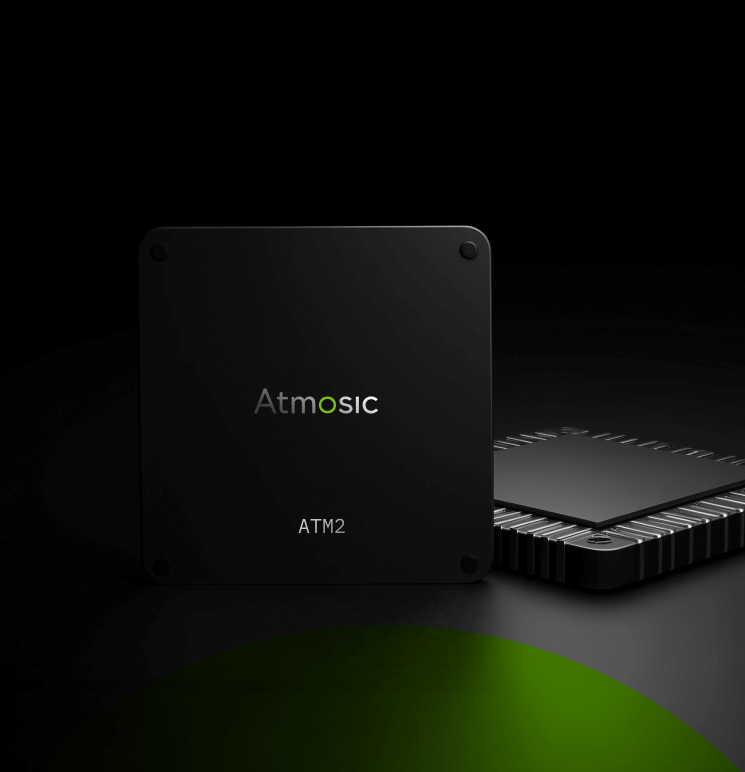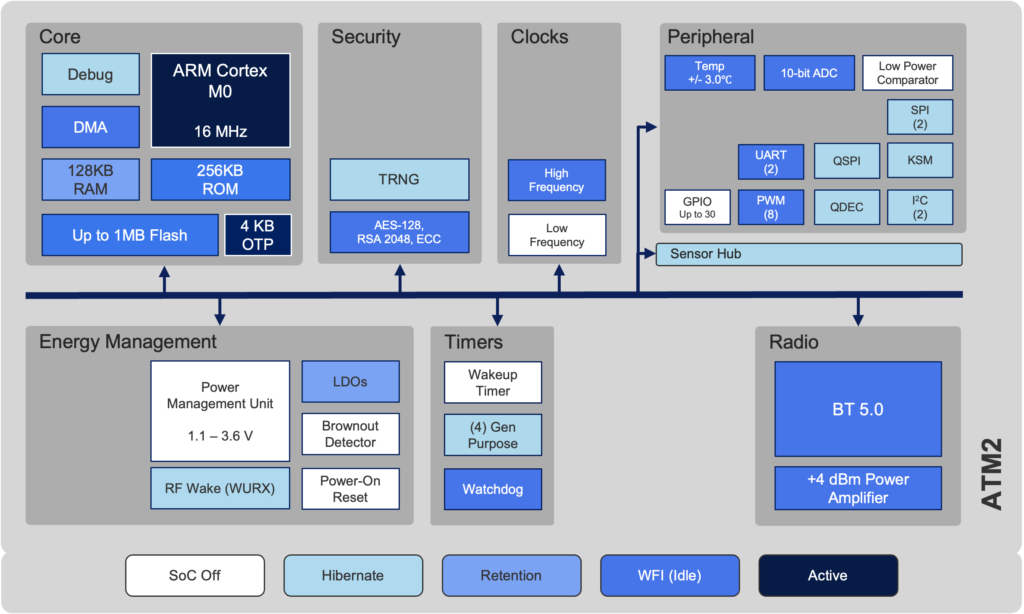The ATM2 Series
The ATM2 Series is a family of extreme low-power Bluetooth® 5 system-on-a-chip (SoC) solutions.

ATM2
The ATM2 Series is a family of extreme low-power Bluetooth® 5 system-on-a-chip (SoC) solutions.
This Bluetooth Low Energy SoC integrates a Bluetooth 5 radio with an ARM® Cortex® M0 processor and state-of-the-art power management to enable maximum lifetime in battery-operated devices.
The extremely low power ATM2 series SoC is designed with an extensive set of peripherals and flexible I/O to support a wide variety of applications across the consumer, commercial, and industrial Internet of Things (IoT) markets.
The ATM2 series is available as a 40-pin QFN package (ATM2201/ATM2202), 64-pin DR-QFN package (ATM2221), 56-pin QFN(ATM2231), or 37-pin WLCSP.
The ATM2 series is available as a 40-pin QFN package (ATM2201/ATM2202), 64-pin DR-QFN package (ATM2221), 56-pin QFN(ATM2231), or 37-pin WLCSP. All package options support the same core set of features with the number of available I/O based on the package type
An integrated Sensor Hub is a configurable hardware element that can read data from external sensors and write to memory while all other power domains remain powered down. The Sensor Hub can also trigger a full CPU wakeup if the sensor value falls outside pre-set thresholds.
An independent RF Wakeup Receiver is a separate RF receiver that scans for an incoming paging or wakeup signal while the rest of the SoC remains in a very low power state. The wakeup signal can be from a Bluetooth device, mobile phone, or a dedicated transmitter over a wide range of RF frequencies.
The ATM2 supports a wide range of peripherals through its I/O interface including UART, I2C, SPI, and Quad SPI for external flash. Also included is hardware for a Pulse Density Modulated (PDM) digital microphone, Pulse Width Modulation (PWM) outputs, Quadrature decoder (QDEC) for sensor inputs, Keyboard Scan Matrix Controller (KSM), Analog Comparator, and Application ADC. Flexible pin muxing routes peripherals to the I/O pins based on the application and product requirements.






